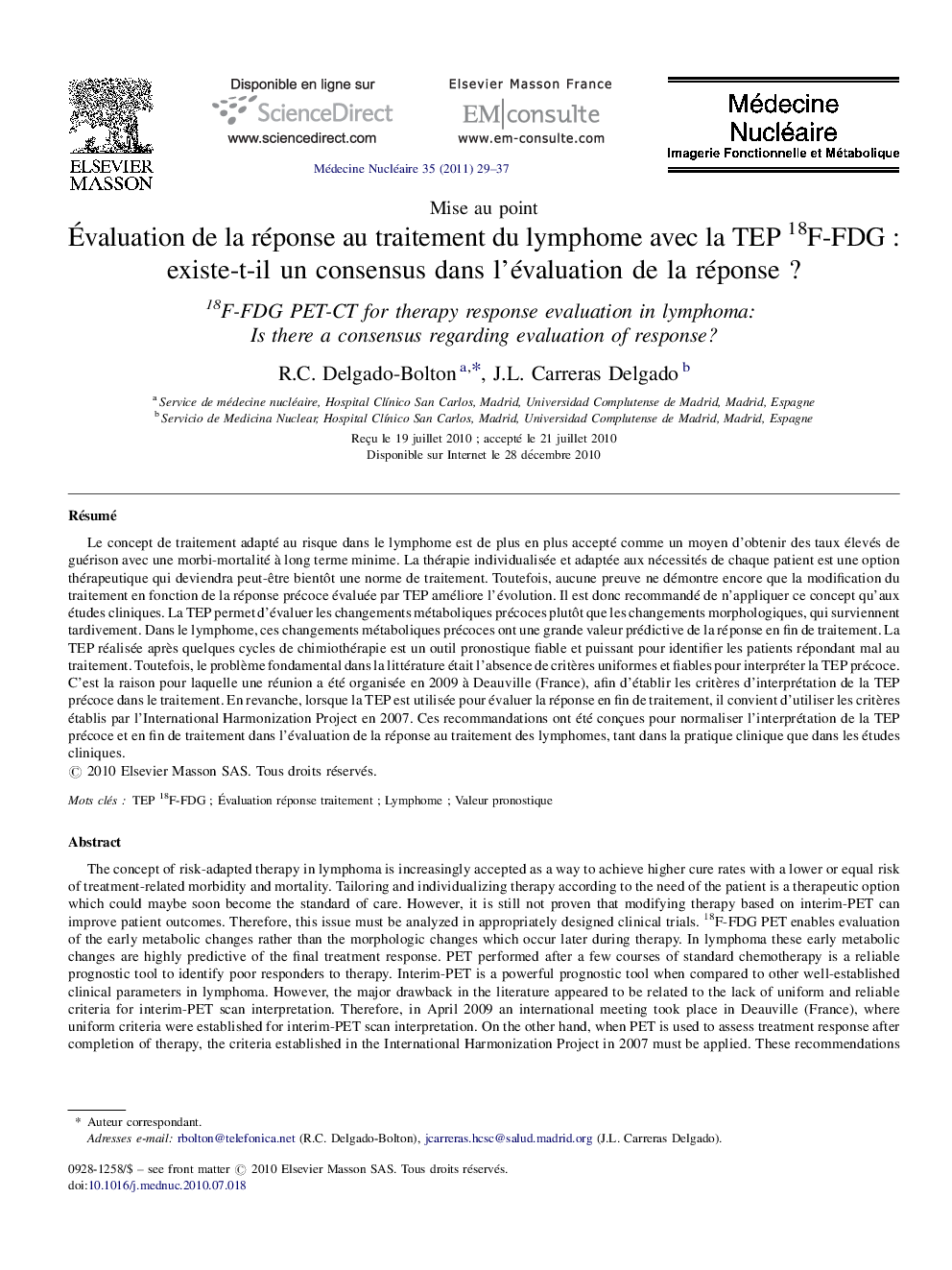| Article ID | Journal | Published Year | Pages | File Type |
|---|---|---|---|---|
| 4244296 | Médecine Nucléaire | 2011 | 9 Pages |
RésuméLe concept de traitement adapté au risque dans le lymphome est de plus en plus accepté comme un moyen d’obtenir des taux élevés de guérison avec une morbi-mortalité à long terme minime. La thérapie individualisée et adaptée aux nécessités de chaque patient est une option thérapeutique qui deviendra peut-être bientôt une norme de traitement. Toutefois, aucune preuve ne démontre encore que la modification du traitement en fonction de la réponse précoce évaluée par TEP améliore l’évolution. Il est donc recommandé de n’appliquer ce concept qu’aux études cliniques. La TEP permet d’évaluer les changements métaboliques précoces plutôt que les changements morphologiques, qui surviennent tardivement. Dans le lymphome, ces changements métaboliques précoces ont une grande valeur prédictive de la réponse en fin de traitement. La TEP réalisée après quelques cycles de chimiothérapie est un outil pronostique fiable et puissant pour identifier les patients répondant mal au traitement. Toutefois, le problème fondamental dans la littérature était l’absence de critères uniformes et fiables pour interpréter la TEP précoce. C’est la raison pour laquelle une réunion a été organisée en 2009 à Deauville (France), afin d’établir les critères d’interprétation de la TEP précoce dans le traitement. En revanche, lorsque la TEP est utilisée pour évaluer la réponse en fin de traitement, il convient d’utiliser les critères établis par l’International Harmonization Project en 2007. Ces recommandations ont été conçues pour normaliser l’interprétation de la TEP précoce et en fin de traitement dans l’évaluation de la réponse au traitement des lymphomes, tant dans la pratique clinique que dans les études cliniques.
The concept of risk-adapted therapy in lymphoma is increasingly accepted as a way to achieve higher cure rates with a lower or equal risk of treatment-related morbidity and mortality. Tailoring and individualizing therapy according to the need of the patient is a therapeutic option which could maybe soon become the standard of care. However, it is still not proven that modifying therapy based on interim-PET can improve patient outcomes. Therefore, this issue must be analyzed in appropriately designed clinical trials. 18F-FDG PET enables evaluation of the early metabolic changes rather than the morphologic changes which occur later during therapy. In lymphoma these early metabolic changes are highly predictive of the final treatment response. PET performed after a few courses of standard chemotherapy is a reliable prognostic tool to identify poor responders to therapy. Interim-PET is a powerful prognostic tool when compared to other well-established clinical parameters in lymphoma. However, the major drawback in the literature appeared to be related to the lack of uniform and reliable criteria for interim-PET scan interpretation. Therefore, in April 2009 an international meeting took place in Deauville (France), where uniform criteria were established for interim-PET scan interpretation. On the other hand, when PET is used to assess treatment response after completion of therapy, the criteria established in the International Harmonization Project in 2007 must be applied. These recommendations were designed to standardize the interpretation of interim PET and PET at the conclusion of therapy of patients with lymphoma both in clinical practice and clinical trials.
